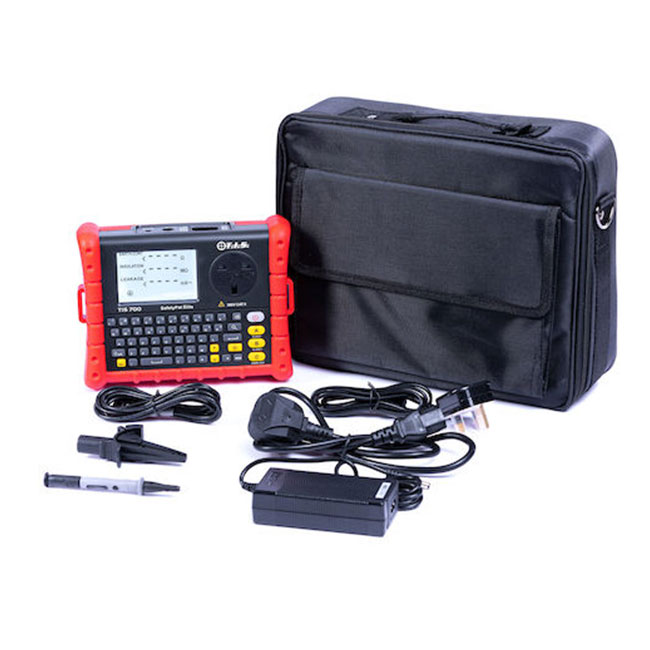
The general purpose of PAT testing is to ensure the safety of electrical equipment in a workplace by identifying hazards that could lead to accidents to the user, such as electrical shock, or could lead to a fire. A standard feature of this testing regime is the insulation resistance test.
What is an insulation resistance test?
Insulation is the material that surrounds the live parts of an electrical appliance, and acts as a barrier between these live parts and the areas that a user could touch, such as the lead or cable of a kettle or an electric drill. This insulation has to effectively prevent the leakage of electrical current, which could cause accidents or fire if the insulation isn’t adequate.
So the insulation resistance test is checking the integrity of the insulation around the live parts of a portable appliance, to ensure it hasn’t degraded or been compromised by damage, and which could therefore cause an accident or fire.
Carrying out an insulation resistance test
The requirements of an insulation resistance test differ between Class l and Class ll appliances. As a safety mechanism, Class l appliances rely on a basic insulation around a cable/lead in addition to an earth connection. This would generally apply to appliances that have a metal casing, such as a kettle, fridge or toaster. In this case the PAT testing regime would require a full set of testing, which in addition to the insulation resistance test, would include earth continuity testing. In the insulation resistance test of a Class l appliance, the insulation would be considered adequate if it was tested as greater than 1 M Ohm.
Class ll appliances use supplementary insulation as their safety mechanism, rather than an earth connection. So, the user is protected by double or reinforced insulation around the lead/cable. Class ll appliances are generally those with a plastic casing, such as a power tool like an electric drill, or a laptop or printer. In this case the PAT testing regime only requires an insulation resistance test, and the insulation is considered adequate for a Class ll appliance if the result is greater than 2 M Ohms. The insulation resistance test is usually carried out at 500 volts DC.
Why is the insulation resistance test important in PAT testing?
- Early problem detection – The insulation resistance test will detect potential problems early before they cause a safety hazard and hence will allow for timely maintenance and repair.
- Replace or repair – If a problem has been detected by the insulation resistance test, a responsible person has the option to repair or replace the portable appliance.
- Preventive – The insulation resistance test is a preventive approach which protects both the user and the equipment before an incident occurs.
- Electrical safety system – The insulation resistance test enhances the electrical safety of your workplace and your system reliability.
- Source identification – Identifying an issue such as insulation degradation or mechanical damage, enables an investigation into the source of the issue, which could be the environmental conditions the appliance is stored or used in, ageing of the appliance or mechanical stress of the appliance.
- Cost savings – As a preventive measure, the insulation resistance test could prevent costly repairs or replacement of an item and can extend the lifespan of the appliance, so you get better value for money.
Professional electrical testing tools from Test Instrument Solutions
You can carry out the insulation resistance test using a multi-function tester, as per these supplied by Test Instrument Solutions, using a dedicated insulation tester or using specialist PAT testing equipment. So, check out the test equipment supplied Test Instrument Solutions and contact our team today for your PAT testing needs.
Product Demonstration Video
Below is a product demonstration video for the TIS 700 Elite Downloading Portable Appliance Tester
Please note that this section is for information purposes only. Anyone using equipment referred to in this section must be suitably qualified and/or experienced within the respective field. If in doubt before use, please consult a qualified electrician or engineer & thoroughly read all instruction booklets.